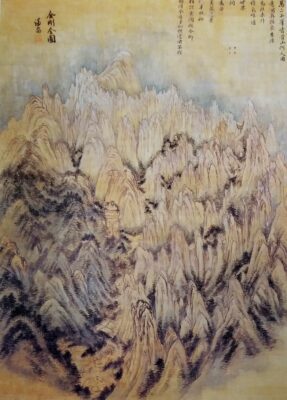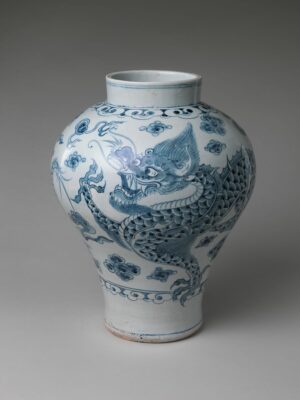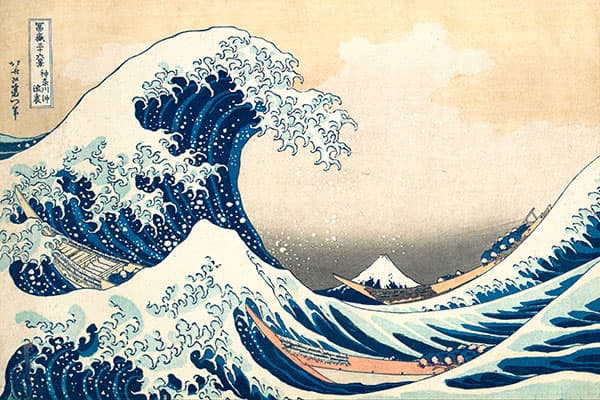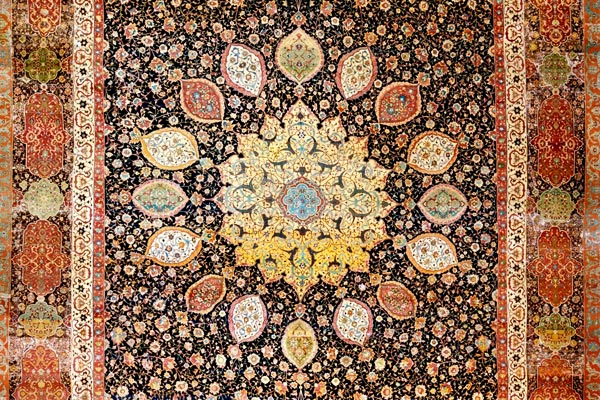Korean Art
Art from the diamond mountain
“The nature portrayed in Korean art is not a product of an objective world, but an expression of an omnipresent view of nature bespeaking both the consciousness of human beings and the source of life.”
Kim Kwang-Myung: “The Aesthetic Turn in Everyday Life in Korea”
Images: Jeon Seon: “Geumgang Jeondo (General view of Mt. Geumgangsan / The Diamond Mountain)”, Joseon Dynasty ·· Dragon jar, Joseon Dynasty. Metropolitan Museum of Art.
Korea‘s geographical location between China and Japan has historically shaped its culture and art, with the Korean peninsula being a cultural bridge between Chinese and Japanese civilisations. “Many important cultural developments, including the Chinese writing system, Confucianism, Buddhism, and some ceramic production techniques, were imported from China into Korea” (“The Arts of Korea”, published by the Metropolitan Museum of Art, 2001), and then passed on to Japan.
While painting and calligraphy take pride of place in the art of China and Japan, ceramics and pottery have traditionally been the most appreciated Korean artistic creations. During the Goryeo Dynasty (918-1393), the Chinese referred to Korean ceramics as “the best under heaven”, and incorporated Korean techniques and styles into Yuan Dynasty ceramics. Later, during the Joseon Dynasty, Korean ceramics show “a stylistic synthesis of Chinese precedents and indigenous ideas” (Penny Bailey: “The underglazed ceramics of the Joseon Dynasty”, University of Queensland, 2013).
In painting, the influence of Chinese painting was enormous at least until the early Joseon Dynasty, considered the “apex” of Korean painting (“The International Journal of Korean Art and Archaeology”, Volume 03, 2009), when artists such as Jeong Seon began to develop a more indigenous style based on Korean landscapes. Sculpture, both in wood and stone, also showed for centuries the influence of Chinese Buddhism.
After the end of the Japanese occupation of Korea, contemporary Korean art shows the Western influences that came with globalisation, while maintaining the age-old ideas of traditional Korean art, especially ceramics, as can be seen in works by artists such as Chang Ucchin and Lee Ufan.
G. Fernandez · theartwolf.com
Follow us on:




